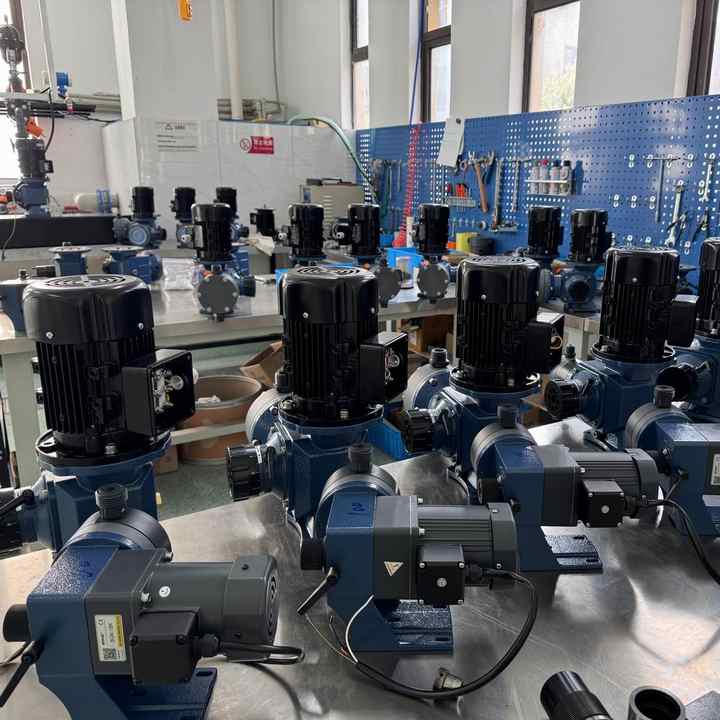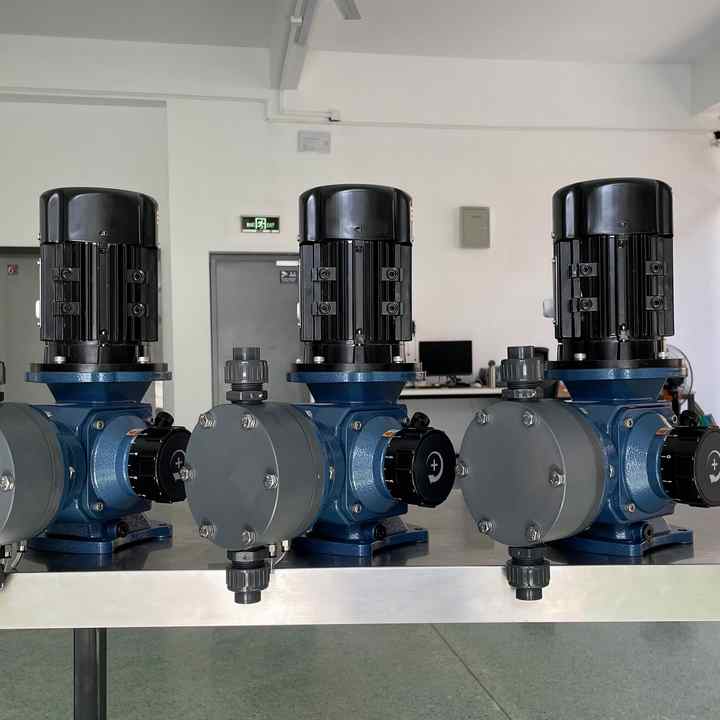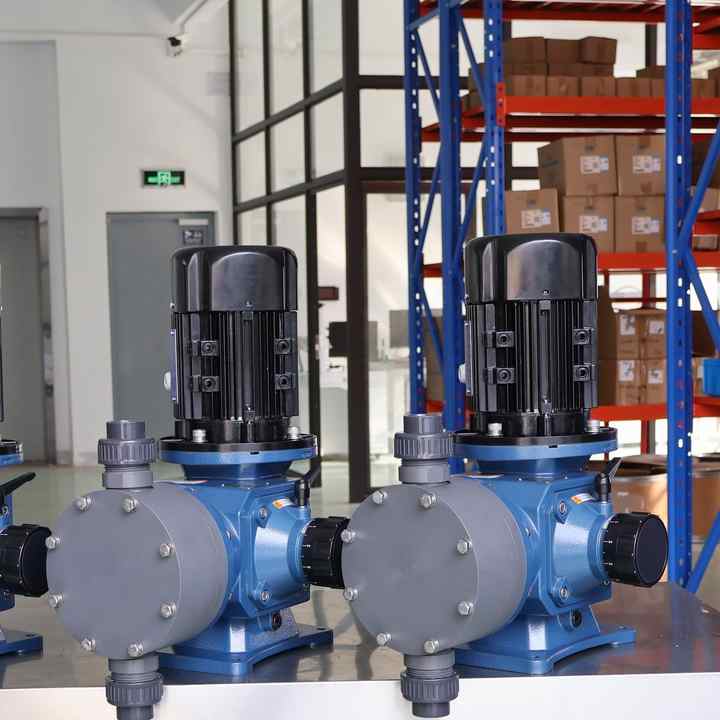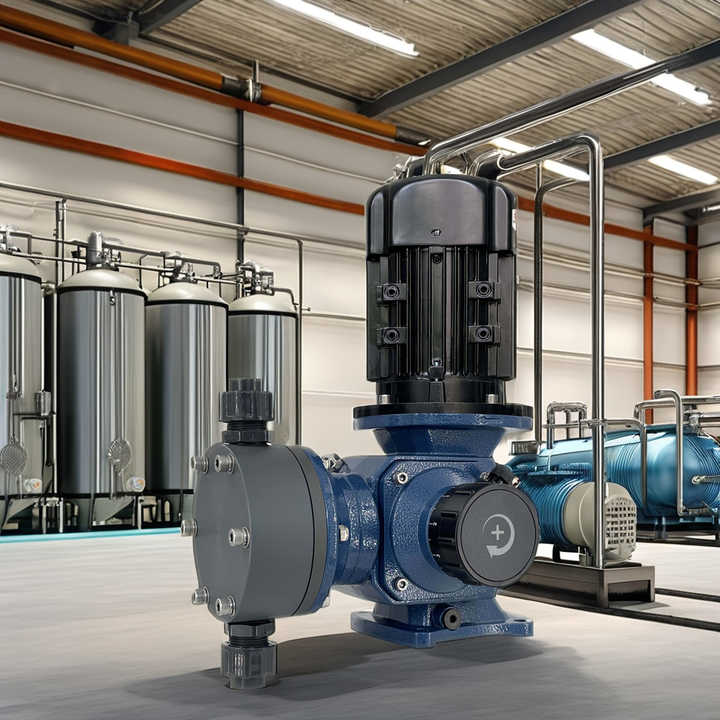Principle and Key Considerations of Dosaki Chemical Dosing Pumps
The operating principle of Dosaki chemical dosing pumps is based on the difference in the volume of the pump chamber and the dosing components that regulate the liquid flow. These pumps are designed for stable operation without vibrations or noise, ensuring long-term durability, accurate dosing, and wide-ranging applications.
Chemical dosing pumps, including those from Dosaki, offer numerous benefits and versatile applications, all while having a simple working principle.
Let’s dive into the principles behind chemical dosing pumps and the important things to consider when using them.
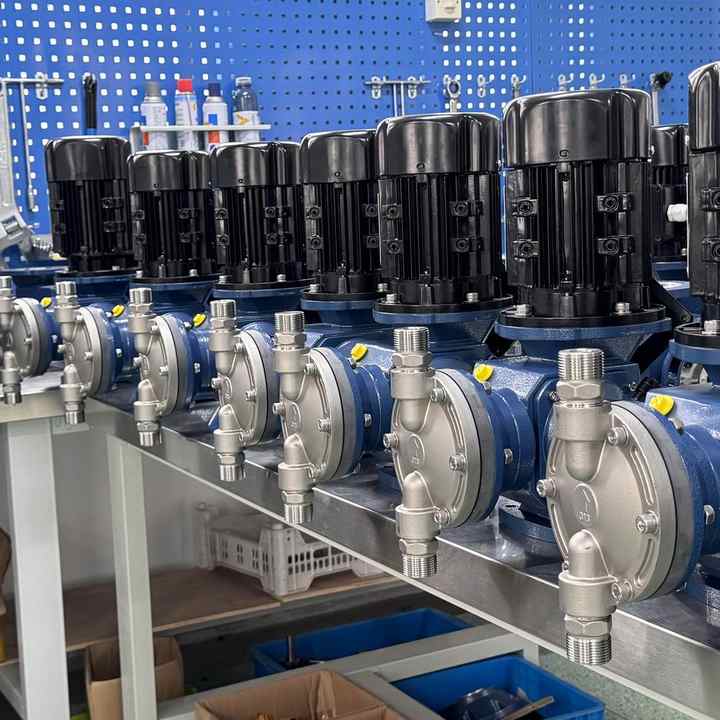
Principle of Dosaki Chemical Dosing Pumps
Dosaki chemical dosing pumps operate through a straightforward sequence: self-priming, liquid suction, liquid discharge, and flow rate adjustment. These steps continuously cycle, creating a complete process that ensures maximum pump performance.
- Self-Priming Process: The first step is when the chemical fluid is drawn into the pump chamber until full, and this is continued during operation.
- Suction Process: During this process, the one-way valve at the suction port opens, allowing the liquid to enter the pump chamber, while the outlet valve closes.
- Discharge Process: Once the suction is complete, the inlet valve closes, and the outlet valve opens to expel the liquid.
- Flow Rate Adjustment: Flow adjustment can be done manually or automatically, depending on the type of pump. Dosaki dosing pumps equipped with sensors provide real-time flow data and allow for remote monitoring via a control station, ensuring ease of management.
Things to Consider with Dosaki Chemical Dosing Pumps
There are several key factors to consider when using chemical dosing pumps to enhance performance and prolong pump lifespan.
- Dosaki chemical dosing pumps are available with low flow rates.
- Both manual and automatic control options are available.
- These pumps can handle a wide range of applications, including the dosing of corrosive chemicals, acids, viscous fluids, and high-density substances.
- Flow rates can be adjusted by increasing or decreasing the number of pump heads.
- Only use chemical dosing pumps for applications requiring high-pressure dosing, precise dosing, or when handling corrosive or abrasive fluids.
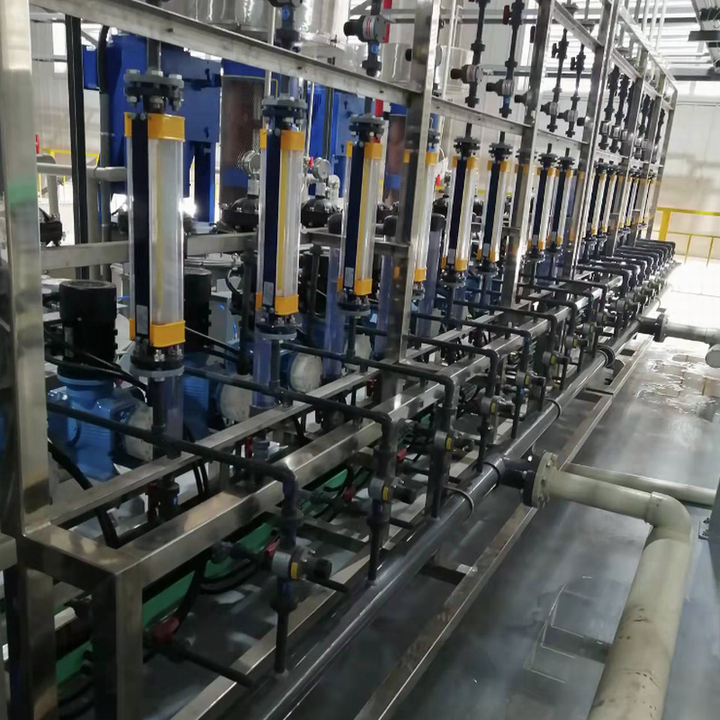
What is a Chemical Dosing Pump?
A chemical dosing pump is an industrial pump with a low flow rate and capacity, designed to accurately deliver specific volumes of liquid. It precisely dispenses the required amount of fluid over a set time period, and Dosaki pumps can easily adjust the flow rate as needed.
Dosaki Dosing Pump Technical Specifications
Dosaki chemical dosing pumps come with key technical specifications, including flow rate, power, voltage, and pressure. Understanding these parameters ensures optimal performance and longevity. Typical flow rates range from 0.001 gallons per hour (gph) to 20 gallons per minute (gpm), with pressures ranging from 10 to 30,000 psi.
Applications of Dosaki Chemical Dosing Pumps
Dosaki dosing pumps are versatile, with applications across various industries. They are commonly used for:
- Dosing chemicals in wastewater treatment
- Fluid blending in food processing plants
- Chemical handling in cosmetic and pharmaceutical industries
- Handling viscous fluids and hazardous chemicals
Advancements in Chemical Dosing Pumps
Recent advancements have improved Dosaki dosing pumps’ design, functionality, and application range. The ability to handle chemicals used in disinfection and pH regulation of drinking water, as well as in wastewater and industrial treatments, makes these pumps essential in various industries. Dosaki pumps also play a crucial role in reducing chemical measurement costs, particularly in industries such as agriculture and food processing.
Different Types of Dosaki Dosing Pumps
Dosaki offers several types of dosing pumps, including:
- Diaphragm Pumps: Operate via reciprocating diaphragm motion.
- Piston Pumps: Use reciprocating piston motion.
- Hydraulic Pumps: Combine piston and diaphragm motion.
- Solenoid Pumps: Use electromagnetic force for fluid transfer.
Each pump type has its unique advantages depending on the specific dosing requirements, so it’s important to understand your needs before choosing the right pump.





